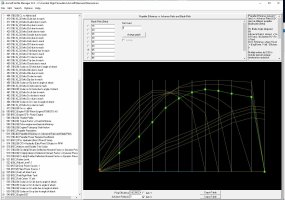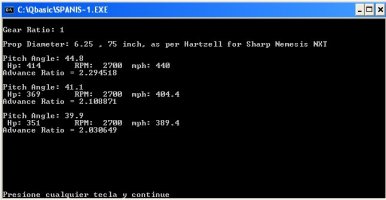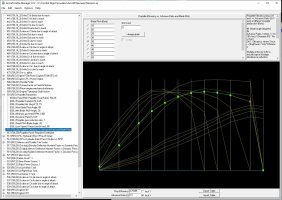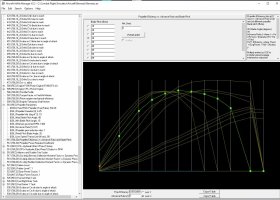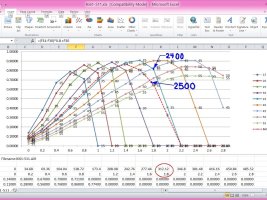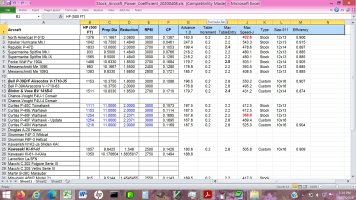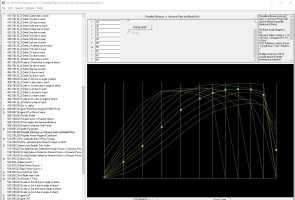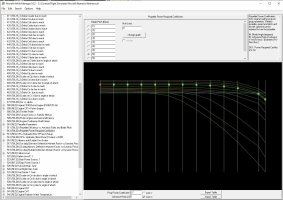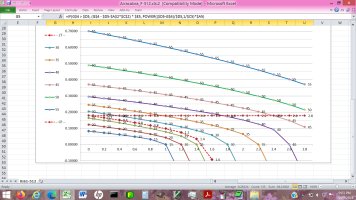Hello Aleatorylamp,
Anna Honey just left for a trip today. I saw your prior post an hour or two ago just before Lunch but wanted to finish Lunch and start a load of laundry before sitting down at the computer. My Daughter is leaving for a trip tomorrow.
I was just about to tell you that you should take a better look at your two HP vs Altitude graphs.
One of the things you can generally rely on is that maximum speed at altitude is going to be pretty close to where the maximum engine power is achieved.... In other words, when you don't have a monster sized bulge in the middle of your HP vs Altitude graph, it will be at the Critical Altitude. There really isn't "Ram Effect" to be concerned about in CFS as I understand it.
Realistically, 17,500 Feet is not terribly high for a critical altitude. If you look at your two graphs that are posted here you will see that you don't seem to have higher HP readings before the Manifold Pressure peak and corresponding HP peak.
EDIT: In other words, your Critical Alttiude is still at such a low range that the bulge between SL and Critical Altitude isn't that great and you should probably just set Critical Altitude to be that at which the aeroplane was known to achieve its best speed.
As such, I suggest you INCREASE the boost for your supercharger just slightly until you get to 17,500 Feet or just below.
When you do, you will notice that if you move the Critical Altitude up to 17,500 Feet, the speed there will be too high by just a touch.
There are cool tricks to mess with that without messing with the Sea Level speed but it gets pretty tricky. Think Propeller Tables and CL Graph.
Look at the what Propeller Pitch is actually being used. I do not believe the range of 15 - 55 Degrees as on the P-51D is optimal for this little light aeroplane.
Enough for now, I have a few more chores before my Daughter gets home.
- Ivan.
Anna Honey just left for a trip today. I saw your prior post an hour or two ago just before Lunch but wanted to finish Lunch and start a load of laundry before sitting down at the computer. My Daughter is leaving for a trip tomorrow.
I was just about to tell you that you should take a better look at your two HP vs Altitude graphs.
One of the things you can generally rely on is that maximum speed at altitude is going to be pretty close to where the maximum engine power is achieved.... In other words, when you don't have a monster sized bulge in the middle of your HP vs Altitude graph, it will be at the Critical Altitude. There really isn't "Ram Effect" to be concerned about in CFS as I understand it.
Realistically, 17,500 Feet is not terribly high for a critical altitude. If you look at your two graphs that are posted here you will see that you don't seem to have higher HP readings before the Manifold Pressure peak and corresponding HP peak.
EDIT: In other words, your Critical Alttiude is still at such a low range that the bulge between SL and Critical Altitude isn't that great and you should probably just set Critical Altitude to be that at which the aeroplane was known to achieve its best speed.
As such, I suggest you INCREASE the boost for your supercharger just slightly until you get to 17,500 Feet or just below.
When you do, you will notice that if you move the Critical Altitude up to 17,500 Feet, the speed there will be too high by just a touch.
There are cool tricks to mess with that without messing with the Sea Level speed but it gets pretty tricky. Think Propeller Tables and CL Graph.
Look at the what Propeller Pitch is actually being used. I do not believe the range of 15 - 55 Degrees as on the P-51D is optimal for this little light aeroplane.
Enough for now, I have a few more chores before my Daughter gets home.
- Ivan.
Last edited:

